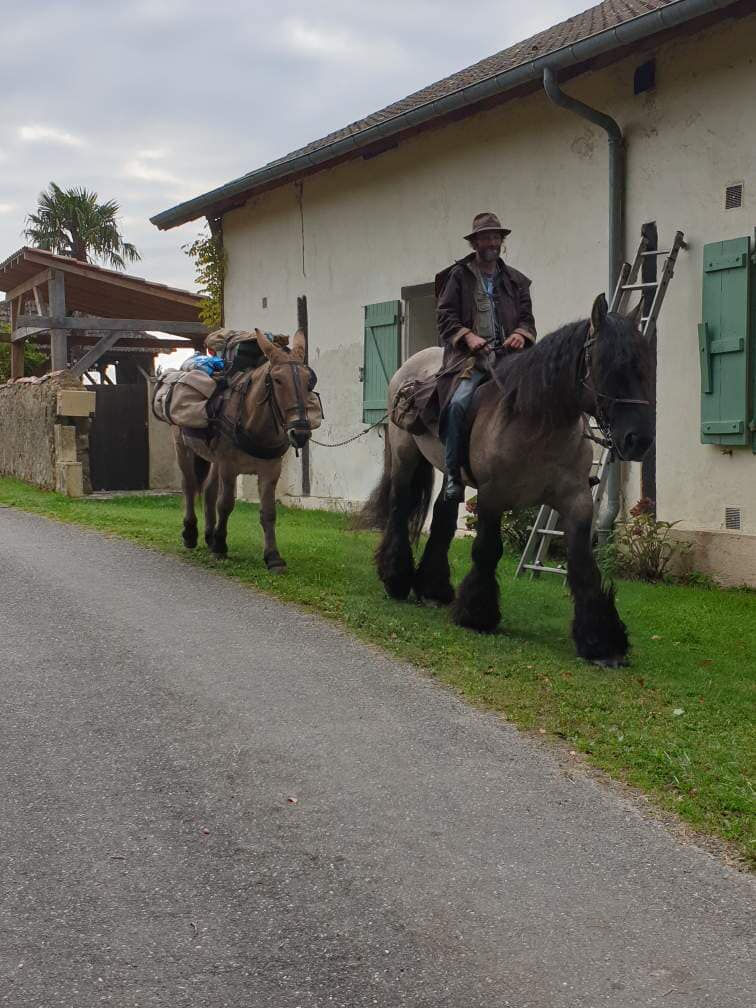One of the two registered mules recognized by the French Ministry of Agriculture

Origine
It's the hybrid (in principle sterile) resulting from "unnatural" mating between the Baudet du Poitou and the Trait Poitevin mulassier mare. In the Poitou region in the 19th century, Trait Poitevin mares were used almost exclusively for mulassière production. Breeders only bred horses when the mares were unable to produce mules. The most discerning of them would, however, breed successful aging mares to the horse, in order to preserve the stock. The giant of the category was once sold worldwide (up to 18,000 per year in the 19th century).
Today, annual production barely exceeds twenty animals, which are easily sold in southern Europe. Since autumn 2002, the "Mule poitevine" appellation has been officially recognized by the French Ministry of Agriculture. Animals resulting from a cross between a male registered in the Baudet du Poitou studbook, approved for public breeding for the production of Baudets du Poitou or mulassier production, and a female registered in the Trait poitevin mulassier studbook, are automatically entered in the Mule poitevine register.
Morphology
The Poitevin mule's head, large and long with highly developed ears, resembles that of the Baudet. The pyramid-shaped neck is trimmed with a sparse mane, which is generally trimmed to round and raise the neck, giving it a "rouée" shape. The withers are not very pronounced; the back and loins are straight; the croup is sharp, short and swollen; the chest is broad; the ribs are flat and long. The shoulders are short and slightly sloping; the forearms are long; the muscles are flat and well defined; the fetlock is strong; the pastern is short; the joints are highly developed and very dry; the foot is smaller than the horse's; with a supple, resistant black horn. The tail is thin with fine, sparse manes. The color of the coat is given in most cases by the sire: bouchard (zain black), boyard (black with whitish washes), or robin (bay with all its shades); more rarely by the dam: gray, biche (isabelle with or without mullet stripe), red, yellow, caille, roux, péchard...
The Poitevin mule usually measures 160 to 165 cm at the withers, but can reach and even exceed 170 cm for an average weight of 600 to 700 kg.
Skills and uses

Their sturdiness and sure-footedness make them a remarkable tool for the pack. In Savoie, for example, mules have been used for several years by hiking organizers, including some Mules Poitevines, to carry the luggage of tourists hiking around Mont-Blanc. These mules carry up to 200 kg on their backs, and climb to altitudes of 2,500 metres. We can also mention Mustang Richardière, Jean Poitevin's mule, who accompanies him on long-distance trips.
Mules Poitevines are also used for carriage driving and leisure saddling. While most are used for family leisure, a few have taken part in competitions. Dolly and Thalia, for example, took part in the Route du Poisson driving competition as a pair, and more recently Sirocco, a young mule driven by Bénédicte Touchard, took part in the Pays de la Loire and SHF driving competitions, including the national final in Compiègne.
Finally, the Mule Poitevine is above all a draught mule, particularly suited to farm work and skidding.
Stallions
Didier Bernard Old-fashioned hand-assembly

Comments